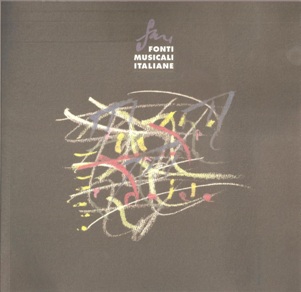«Tu mi sprezzi e mi deridi» or «Salve Pater Benedicte»? On Sources Containing Music by Italian Composers at the Cistercian Abbey in Stams/Tyrol
Abstract
Salve Pater Benedicte: a late 18th-century offertory for alto solo and orchestra on this text would not be considered extraordinary at a Cistercian monastery. It would also not be unusual then for a piece of music at a Roman-Catholic Church in Austria to consist not of an original composition, but rather to be an arrangement of an opera aria; in this case, Zelmira’s aria Tu mi sprezzi e mi deridi from the opera, Il Rinaldo, by Antonio Tozzi. This offertorium surely serves as a representative example for the sacred musical practice at Stams in about 1800. This is supported by the fact that the vocal copy was acquired for the abbey by the Cistercian Father Stefan Paluselli (1748 Kurtatsch/South Tyrol – 1805 Stams). He served as choir director at Stams from about 1790 and preserved the score in his musical collection. Did he know the original work? Was it apparent to him and his colleagues at Stams Abbey that this music—now honoring the great saint—had originally depicted repugnant interpersonal drama on the theatrical stage? Where did Paluselli find the numerous musical manuscripts, acquired during his time of office at Stams, containing mostly works by Italian composers? What works did he choose? What unique features do we find today in these source materials? Stams Abbey, founded in 1273, occupies an outstanding position among Tyrolean monasteries, both from a sociopolitical as well as a cultural standpoint. For rism-opac the author has currently indexed 7,500 musical items from Stams, which are generally accessible (www.rism.info, library identifier: A-ST). In this paper will be presented for the first time an overview of that section of the music archive at Stams involving music by Italian composers. There will be discussed those works and genres that are present in their original form or in arrangements, their use in liturgical and secular musical performances at the Abbey in the second half of the 18th century.
*****
“Tu mi sprezzi e mi deridi“ o “Salve Pater Benedicte”? Sulle fonti contenenti musica di compositori italiani conservate nell'Abbazia cistercense di Stams in Tirolo
“Salve Pater Benedicte”: un offertorio del tardo Settecento per contralto e orchestra su questo testo non si deve considerare straordinario in un monastero cistercense. Non è quindi insolito che un brano musicale in una chiesa cattolico-romana in Austria consista non di una composizione originale, ma sia un arrangiamento di un'aria d'opera; in questo caso, l'aria di Zelmira “Tu mi sprezzi e mi deridi” sall'opera Il Rinaldo di Antonio Tozzi. Questo “Offertorium” può certamente servire come esempio rappresentativo per la prassi musicale sacra a Stams intorno al 1800. Ciò è documentato dal fatto che la copia fu acquistata per l'abbazia dal cistercense padre Stefan Paluselli (1748 Kurtatsch/Sud Tirolo – 1805 Stams). Paluselli fu direttore del coro a Stams dal 1790 ca. e conservò la partitura nella sua collezione musicale. Conosceva l'opera originale?Era chiaro a lui e ai suoi colleghi all'abbazia di Stams Abbey che questa musica - ora in onore del grande santo – aveva originariamento descritto un dramma interpersonale ripugnante sulla scena teatrale? Dove trovò Paluselli i numerosi manoscritti musicali, acquisiti durante il suo servizio a Stams, contenenti perlopiù opere di compositori italiani? Quali opere scelse? Quali specifiche caratteristiche troviamo oggi in queste fonti? L'abbazia di Stams, fondata nel 1273, occupa una posizione eminente fra i monasteri ritolesi, sia dal punto di vista sociopolitico, sia da quello culturale. Per l'opac del RISM l'autrice del saggio ha catalogato a oggi 7.500 pezzi musicali da Stams, che sono accessibili a tutti (www.rism.info, library identifier: A-ST). In questo saggio viene presentata per la prima volta una panoramica della sezione dell'archivio musicale di Stams che contiene musica di compositori italiani. Vengono esaminate le opere e i generi presenti sia nella forma originale sia in arrangiamenti, e il loro uso in esecuzioni liturigiche o profane all'Abbazia nella seconda metà del Settecento.
##submission.downloads##
Pubblicato
Fascicolo
Sezione
Licenza
© CIDIM
Tutti i diritti riservati


